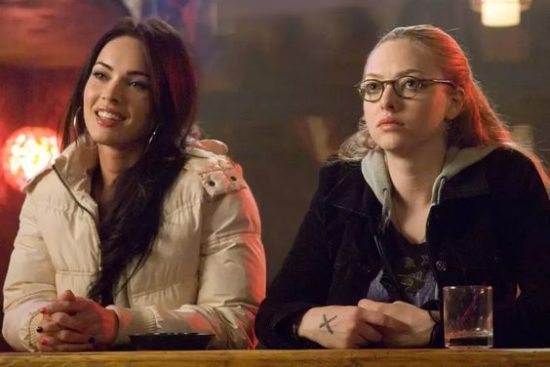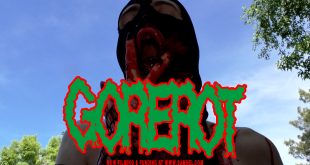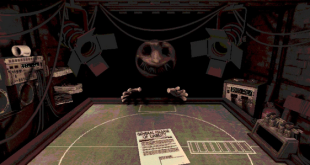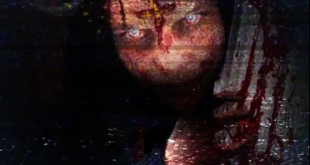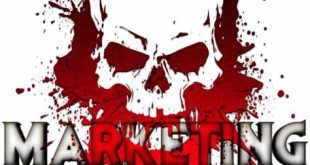Glasses today have evolved from something borne out of necessity into something that can contribute to horror’s artistic endeavors. Lindsay Lowe’s eyewear, for example, pushes the envelope when integrating aspects of the genre into her work. Conceptualizing glow-in-the-dark and Ouija-inspired frames, Lowe’s glasses show the potential that specs can have in representing the artistry in horror.
This should come as no surprise, with many brands constantly pushing for innovations in terms of style. Oakley sunglasses can be seen as the epitome of this as the company’s frames are consistently futuristic and unique. The popular Castel design, made with Oakley’s BIO-Matter and Prizm frames, looks like they were made for any menacing action-horror antagonist. Their iconic Overthetop model is worn as a helmet paired with goggle-like frames, which also captures the otherworldliness often found in the genre. Other glasses makers, such as artist Cyrus Kabiru, have made different eyewear reminiscent of peculiar monsters from movies. He was able to recreate the eyes of The Pale Man from Labyrinth and the titular being from The Fly.
While we may not always pay attention to it, there are many more instances of eyewear being used in horror movies — for both style and storytelling purposes — and these are just a few that genre fans might recognize:
The Invisible Man (1933)
Hailed as a classic by many horror and sci-fi fans, The Invisible Man cemented itself as an iconic film in both genres. Loosely based on a novel by H.G. Wells, it follows Dr. Jack Griffin, wrapped in bandages and wearing a pair of circular goggle sunglasses. Due to an experiment, Dr. Griffin is left invisible without his garb – a genuinely terrifying experience. Because of this, the goggles he wears throughout the film are some of the most recognizable eyewear in horror movies to date. Unfortunately, glasses makers don’t carry anything similar to the eyewear in the movie, but many fans have found creative ways to recreate them.
Halloween (1978)
Halloween is regarded as one of the most successful franchises in horror, but the look to highlight comes from its first-ever movie. In one famous scene, antagonist Michael dons a sheet ghost outfit, complete with a pair of chunky Wayfarer-style specs popularized by Ray-Ban. This scene is well-known because it might be the first thing that comes to mind for many horror fans when they think of sheet ghosts. However, those trying to recreate this look will most likely need a pair of mirror sunglasses to see while still giving off the same illusion, so the Oakley Holbrook, together with Ray-Ban Wayfarers, are your best bets if you want to style yourself with Halloween in mind.
Bram Stoker’s Dracula (1992)
There’s no more well-known horror character than Dracula himself. Based on Bram Stoker’s famous book, this movie births a more modern take on vampires. Gone are the days of older men in castles as this brings a new era of the sleek and stylish undead. We see this best when Dracula is out and about, wearing a pair of head-turning pince nez sunglasses with brilliant blue lenses. Though mainstream brands don’t carry this kind of specs anymore, they are still popular among collectors and vintage fanatics, showing just how pivotal this scene is within the horror genre and eyewear industry.
Jennifer’s Body (2009)
There has been a Jennifer’s Body renaissance in the last few years, as contemporary horror fans have started to appreciate the feminist critique and meaning behind the film. While the titular Jennifer herself doesn’t wear glasses, her best friend and the movie’s protagonist, Needy, does. As the shy and nerdy foil, her character almost always wears a pair of animal print frames. The closest model to the ones from the movie is Infinity Frames’ 9830. And with how important the glasses are to Needy’s overall character arc, it deserved a spot on this list.
Eyewear has undoubtedly made leaps and bounds in terms of designs and styles, finding their way into horror movies. Whether they’re accessories pivotal to the film or add an important extra something, their use in the genre is undoubtedly essential.
 Horror News | HNN Official Site | Horror Movies,Trailers, Reviews
Horror News | HNN Official Site | Horror Movies,Trailers, Reviews
